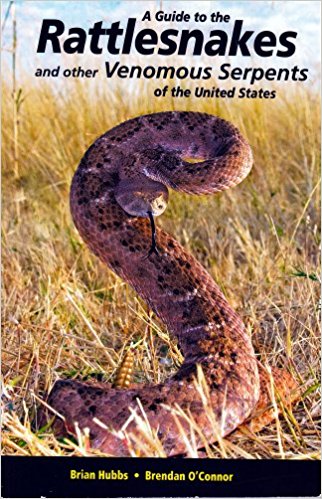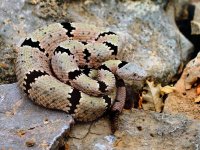Click on a picture to see a larger version in a different window
| Range: |
 |
| Other Names: |
Blue Rattlesnake, Green Rattlesnake, Green Rock Rattlesnake, Rock Rattlesnake |
| Description: |
A small rattlesnake, 15"- 33" in. A light greenish-gray to blue-gray
rattlesnake with 14 to 24 dark gray-brown to black rings outlined in a
white irregular lines, except for specimens from the Guadalupe
mountain range, they are mottled dusky in coloration. The tail is
bright yellow in juvenile animals and becomes salmon in adults. |
| Venom: |
Venom is medically significant |
| Habitat: |
Inhabits many of the extreme desert mountain ranges in southern New
Mexico. Found at elevations ranging from about 4,000' to 8,500'. A
snake that frequents rocky terrain, large rock outcroppings, rocky
stream beds, and steep rocky talus slopes in evergreen woodland and
montane conifer forests. Basks in open rocky areas in forests near
permanent and intermittent springs or streams. |
| Behavior: |
Chiefly diurnal but can be active night in warmer months. |
| Hibernation: |
Known to hibernate in deep cracks, sometimes in communal dens. Have been found hibernating with Western Diamondbacks (C. atrox) and Blacktail Rattlesnake (C. molossus and C. ornatus) |
| Reproduction: |
Livebearing,
gives live birth 2-9 young in late summer. |
| Diet: |
Young may feeds on insects, Adults eat mice, frogs, lizards, and birds |
Authored by: Garth Teitjen
Sources:



|













